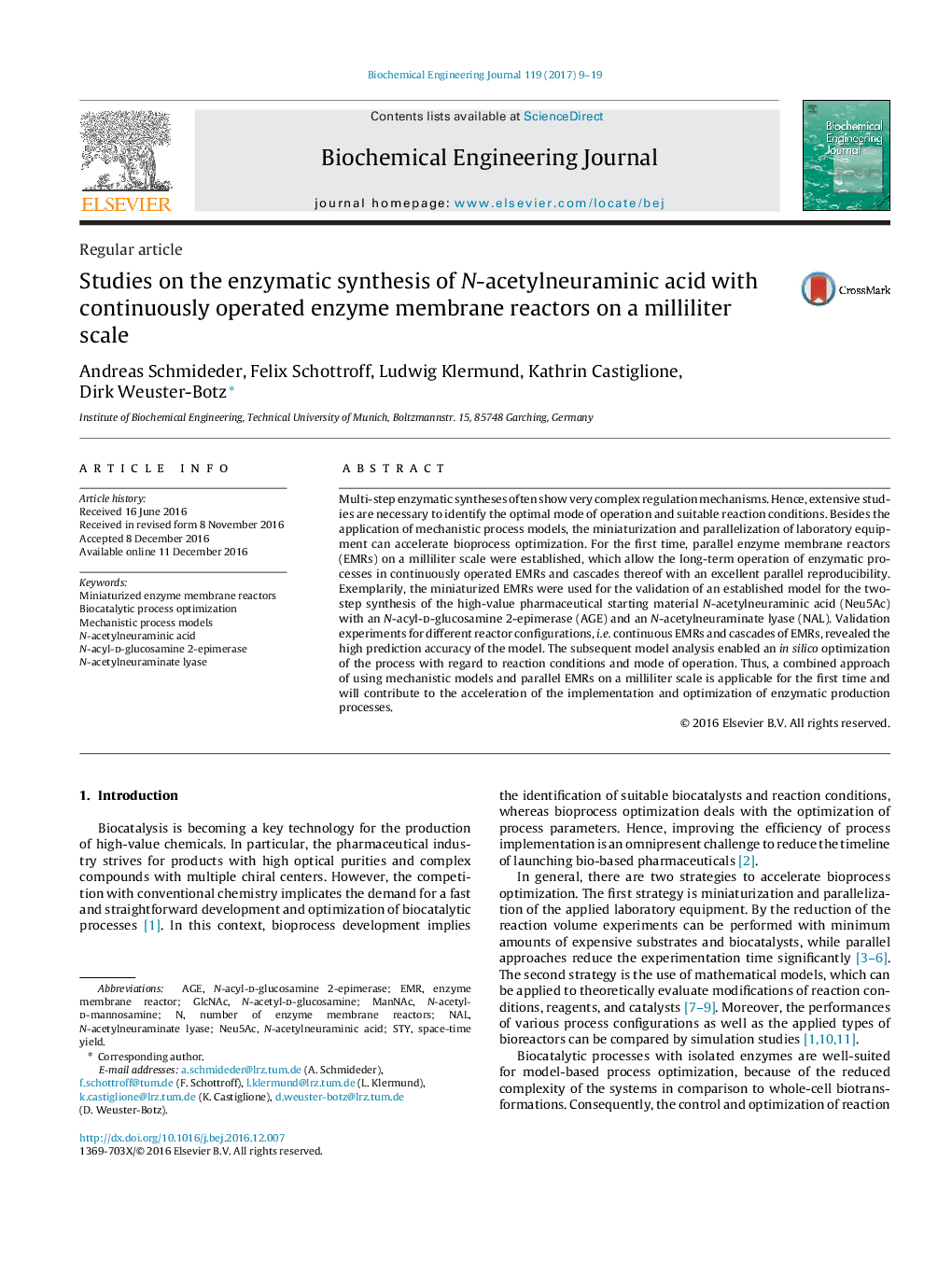| Article ID | Journal | Published Year | Pages | File Type |
|---|---|---|---|---|
| 6450410 | Biochemical Engineering Journal | 2017 | 11 Pages |
â¢Parallel enzyme membrane reactors on a milliliter scale were implemented.â¢A mechanistic model for the synthesis of N-acetylneuraminic acid was established.â¢Parallel enzyme membrane reactors were used for process model validation.â¢The mechanistic process model was used for in silico process optimization.
Multi-step enzymatic syntheses often show very complex regulation mechanisms. Hence, extensive studies are necessary to identify the optimal mode of operation and suitable reaction conditions. Besides the application of mechanistic process models, the miniaturization and parallelization of laboratory equipment can accelerate bioprocess optimization. For the first time, parallel enzyme membrane reactors (EMRs) on a milliliter scale were established, which allow the long-term operation of enzymatic processes in continuously operated EMRs and cascades thereof with an excellent parallel reproducibility. Exemplarily, the miniaturized EMRs were used for the validation of an established model for the two-step synthesis of the high-value pharmaceutical starting material N-acetylneuraminic acid (Neu5Ac) with an N-acyl-d-glucosamine 2-epimerase (AGE) and an N-acetylneuraminate lyase (NAL). Validation experiments for different reactor configurations, i.e. continuous EMRs and cascades of EMRs, revealed the high prediction accuracy of the model. The subsequent model analysis enabled an in silico optimization of the process with regard to reaction conditions and mode of operation. Thus, a combined approach of using mechanistic models and parallel EMRs on a milliliter scale is applicable for the first time and will contribute to the acceleration of the implementation and optimization of enzymatic production processes.
